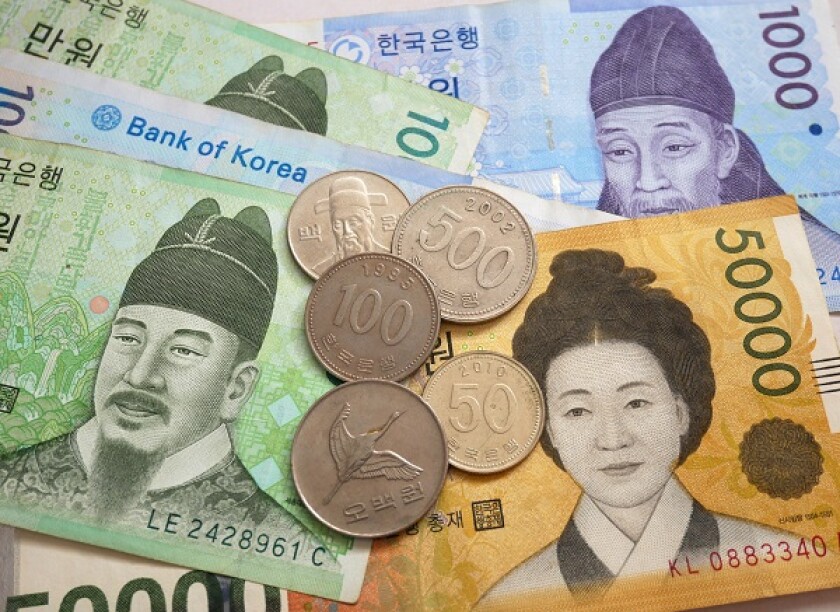On May 20 2020, the Korean Patent Act (KPA) was amended such that mixed damages of lost profits and a reasonable royalty for patent infringement may be claimed by a patentee and awarded by the court. The amendment will apply to damages filed for on or after December 10 2020.
Background
In a patent infringement lawsuit, the burden of proof for damages lies with the plaintiff, i.e. the patentee. However, proving damages often poses a significant challenge for the patentee, since most of the evidence necessary for calculating damages is with the infringer. In order to resolve this imbalance, the KPA includes a special provision to facilitate the calculation of patent damages. Specifically, Article 128 of the KPA stipulates that the patentee's damages from patent infringement can be calculated based on the following:
i) patentee's lost profits (paragraphs 2 and 3);
ii) infringer's actual profits as legal presumption (paragraph 4);
iii) a reasonable royalty (paragraph 5); and
iv) discretion of the court (paragraph 7).
The patentee may claim damages calculated according to each of at least one of (i), (ii), and (iii) above. If the court finds that a loss has been incurred due to the infringement but it is extremely difficult to prove the amount of damages, it may award damages at its discretion based on the evidence and the arguments as a whole (paragraph 7). The damages calculation based on the patentee's lost profit was subject to limitations relating to the patentee's production capacity. This calculation method was criticised as unduly undervaluing damages to patentees, especially when the infringer's sales exceed the patentee's production capacity.
This amendment to the KPA was introduced to increase the potential amount of damages and provide strengthened patent protection.
Damages calculation based on lost profits ("as-is")
Article 128, paragraph 2 of the KPA provided that damages may be calculated by multiplying the number of infringing products sold by the profits per product which the patentee would have sold were it not for the infringement (lost profits). Further, according to Article 128, paragraph 3 of the KPA, the damages shall not exceed the extent that the patentee could have manufactured (i.e. up to the patentee's production capacity). Therefore, it was quite ambiguous under the previous KPA whether damages could be awarded for the number of infringing products beyond the patentee's production capacity.
In this regard, there has been continuous criticism that the KPA did not protect the patentee's rights sufficiently, because a patentee is entitled to produce and sell a patented product on his/her own, as well as to give others a licence to produce and sell the patented product. Thus, a few district courts determined damages for patent infringement by calculating, in addition to the lost profits up to the patentee's production capacity, a reasonable royalty beyond that capacity (so-called "mixed calculation"), albeit in the absence of explicit provisions in the KPA.
As such, patentees have not found particular merit in claiming damages based on paragraph 2, even though calculation of damages based on lost profits would be the most basic and traditional damages jurisprudence. Indeed, the methodologies of (i) to (iv) respectively accounted for 13%, 29%, 10%, and 48% of the damages awarded by the court for patent infringement during the period from 2010 to 2013.
Mixed calculation of lost profits and reasonable royalties ("to-be")
Under the amended KPA, damages may be calculated as the sum of (i) lost profits for the sold infringing products up to the patentee's production capacity (Article 128, paragraph 2(1) of the KPA) and (ii) a reasonable royalty for the sold infringing products beyond the patentee's production capacity (Article 128, paragraph 2(2) of the KPA).
Let us consider an illustrative example where the patentee's production capacity is 1,000 units and the number of infringing products is 10,000 units. According to the previous KPA, the patentee may claim damages as lost profits corresponding to as much as his/her production capacity of 1,000 units, but could not claim damages for the infringing products beyond such production capacity. The amended KPA has now stipulated that the patentee may claim damages as lost profits for 1,000 units as before, as well as damages as a reasonable royalty for the number of the infringing products beyond his/her production capacity (9,000 units).
Such calculation methodology, i.e. mixed calculation, has been widely accepted in other jurisdictions including the US, the UK, Germany, and France. Japan has also amended its patent law in the same way as Korea, which has been in effect since April 2020.
Stronger IP protection
With the present introduction of a mixed calculation methodology for damages for patent infringement in the KPA, patentees now have a greater likelihood of obtaining increased damages for patent infringement by combining damages corresponding to lost profits with a reasonable royalty. In particular, patentees who lack extensive production capacity, such as small and medium enterprises and start-ups, are expected to benefit from the amended KPA.
In addition, the mixed calculation methodology may be combined with treble damages for wilful patent infringement (so called "punitive damages") introduced last year, and thus are expected to lead to synergistic effects.
In light of these recent notable legislative developments in regard to patent litigation, it is clear that the patent litigation landscape in Korea is shifting to become more patentee-friendly. Therefore, it is also noted that performing a freedom to operate (FTO) search and analysis before entering the South Korean market will be more valuable than ever in order to limit the risk of future litigation and avoid unnecessary expense.
Min Son
Partner, Hanol IP & Law












